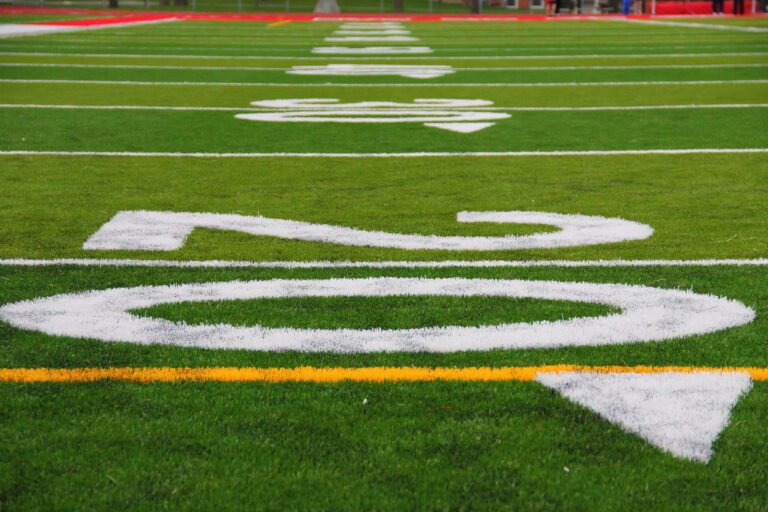
The team’s record sits at 21-19 after a disappointing loss to the Golden State Warriors, despite rallying late in the game. Finch has made significant adjustments, including inserting Donte DiVincenzo into the starting lineup, but questions remain about the team’s trajectory.
It’s time for some harsh truths about the Minnesota Timberwolves
Up here in the frozen tundra of Minnesota, we have an intimate relationship with the concept of traction.
When the wheels find purchase in the slush, gravel or ice, and you’re lurching out of the deepening hole you’ve painstakingly dug for yourself, or re-hugging the curve for your suddenly dear life after the adrenaline jolt of an abrupt careen, a sense of reliability, security and glorious normality returns like a séance of endorphins.
One of the many bountiful pleasures brought by the 2023-24 Minnesota Timberwolves was the omnipresence of their traction. Two weeks into the season, they had already knocked off titans like the reigning champion Denver Nuggets and the soon-to-be champion Boston Celtics, while serving what became a season-long notice that their defense would be without parallel in the NBA. Within the first month their record was 11-3. Their first two-game losing streak was in the next calendar year and they never lost three in a row while winning 56 of 82 regular season contests – followed by their first two playoff series triumphs in 20 years.
On Friday night, the 2024-25 Minnesota Timberwolves will reach the midpoint of their season; one that has become increasingly annoying for its proclivity of skids and spinning wheels. It is a vehicle that Head Coach Chris Finch has trusted too much, opting for the patient, drive-reverse-drive rocking strategy that makes agonizingly fitful progress as the hole extends but never seems to cede. When finally underway for a while, the team enters the curves with careless arrogance, compelling Finch to turn into the inevitable skid, the right short-term strategy that still makes all involved skitterish that it had to be deployed in the first place.
A couple of weeks ago, just before the Wolves won their third straight game by beating the San Antonio Spurs, Finch acknowledged that where the 2023-24 team had rapidly “settled into a rhythm,” the current campaign was revealing “more of a learning curve” for his squad. The Wolves then proceeded to ratify his caution by losing three in a row for the fourth time in 35 games.
Finch resorted to his first significant lineup shift of the season, installing Donte DiVincenzo over Mike Conley as the starting point guard, and the Wolves responded with four wins in five games heading into Wednesday night against Golden State Warriors at Target Center Wednesday night.
Before the game, I asked Finch whether he felt the team could generate enough traction to justify the NBA’s second-highest payroll and the equally elevated expectations in the wake of last year’s excellence.
“I think so,” he replied. “When I think back about some previous seasons and you’re .500 and then you kind of hit a spurt and everything changes. But in answer to your question I think we do see traction.”
Then the Wolves went out and got blitzed, 34-12, in the first quarter, giving up as many points via five turnovers and the team scored itself. Although they rallied – even tying the score with 1:07 left in the game – they were done in on some muffed layups, the majesty of Steph Curry as a closer, and a Golden State rebound off a missed free throw that essentially iced the game as a one-point Wolves loss.
Finch bemoaned the start, of course, and the fact that a team that hangs its hat on playing “big” was outrebounded by a smaller, vastly inexperienced frontcourt, especially second-year center Trayce Jackson-Davis and G-league call-up Gui Santos as the starters for the depleted Warriors roster.
It didn’t matter that Minnesota scored 103 points in the ensuing three quarters. “It took us too long to find that gear,” Finch said matter-of-factly. “I didn’t think we were out there working very hard. We wanted it to come easy.”
Asked why that was, Finch retained an even tone as he indicted the team.
“I don’t know. We struggled to complete some plays. They got out to a hot start shooting-wise and we tried to get it all back with one quick pass and shot. Again not willing to put the work in offensively. We’ve had a habit of that all season,” said Finch, who then repeated, “We just want it easy.”
The record is now 21-19, with a pair of rugged games on the horizon – in New York against a Knicks team that walloped them in their previous meeting this season, and home against a Cleveland Cavs squad that has the best record in the NBA.
By now we know there will be no meaningful traction. Certainly not enough to rekindle the hopes and foster the synergy displayed for almost the entirety of last season.
A game away from the halfway mark, it is time for some harsh truths. Here are a couple.
The relationship between the Timberwolves franchise and power forward Julius Randle will have an unhappy ending
Randle was never the main focus of the deal that brought him to Minnesota just before training camp. There were myriad motivations for the trade made with the New York Knicks by Wolves President of Basketball Operations Tim Connelly.
He wanted to acquire a point guard who could serve as a bridge between veteran point guard Mike Conley and 2024 first round draft pick Rob Dillingham, and Donte DiVincenzo perfectly fit that need at the bargain basement salary of $12 million per year over the next three seasons.
He needed to get off of the enormous long-term “supermax” contract of then-Wolves star Karl-Anthony Towns or almost certainly lose the younger Naz Reid, the reigning Sixth Man of the Year, due to salary cap constraints.
He wanted to get back a first-round draft pick after expending so much draft capital in the Rudy Gobert trade three seasons ago, and the Knicks had one to spare via the Detroit Pistons.
And he needed to acquire Randle to keep up the Wolves identity for rugged frontcourt performance, and, more pertinently, to make the collective salaries on both sides match enough to facilitate the deal.
In terms of pure skills and experience, Randle is one of the three or four best players on the team. But the only thing remaining on his current contract is a player option for next season at $31 million. He needs to perform well enough with the Wolves to entice a team to sign him for at least that much money over multiple years. That team will not be the Wolves – their priority is Naz, who has a $15 million player option himself for next season that would nearly double on the free agent market.
But if Randle opts in for next season, the Wolves are obligated to keep him at that $31 million, complicating efforts to re-sign Naz and hopefully Nickeil Alexander-Walker (NAW), another key member of the rotation.
The situation is tailor-made for friction and inevitable acrimony, but Finch and Randle had a mutual admiration for each other when Finch coached him in New Orleans six years ago, and both sides have worked very hard and acted very professionally to meet each other’s needs. But that is very unlikely in the long run.
Randle does not fit in a lineup that already has an isolation scorer in Anthony Edwards and a space-clogging big man in Rudy Gobert. His virtues involve a lot of ball possession and the Wolves offense can’t afford those touches.
More to the point, the Wolves won’t choose even a maximized Randle, age 30, over the 25-year old Naz, who has the higher future ceiling and a style of play and longstanding camaraderie that fits with Ant, the alpha force in the future of the franchise.
The hope is that Randle plays well enough to garner a decent return on the trade market, either by the Feb. 6 trade deadline or in the offseason. The Wolves – and, to be fair, Randle – have expended a lot of time and energy trying to integrate him in a manner that bolsters the current team and brightens his future elsewhere. But that is becoming a gulf too far and the status quo is increasingly becoming a damaging prospect for both sides.
(For the record, after a slow start, DiVincenzo is performing brilliantly, and the Pistons have improved enough this season to make the protections on their draft pick less likely to be implemented, clearing the way for the Wolves to add another young piece. Trading KAT obviously was a bigger blow to the Wolves than originally supposed, but it does still create cap space for a Naz extension and maybe a chance to retain NAW too.)
Finch needs a more authoritarian voice or a new offensive philosophy
As someone who has covered the Wolves since their second season of existence, I am in a good position to hold the opinion that Finch is the best coach in franchise history. His strength is player-relations, via direct but not inflammatory communications skills and a supposed inclination to build his schematic approach around the strengths of his roster.
But something has been amiss on offense throughout his three-and-a-half-year tenure. Finch prefers a “flow” offense, an ostensibly player-friendly philosophy that functions best under three basic principles: move the ball, move yourself when you don’t have the ball and make quick decisions.
But Ant – remember, the alpha force of all plans for the present and future – too frequently eschews all of those basic principles. That has not always been the case – peak Ant in “flow” mode may well have been a stretch beginning in December 2022 and January 2023 when KAT was injured, Conley had not yet arrived, and he balanced play-making and scoring in a glorious ascendance that led to his first All Star game appearance. And it was furthered under Conley’s tutelage.
But as Ant has become a superstar and “face of the league,” he has faced enormous pressures, be it opposing defenses stacked to deter him, the heightened scrutiny of the gluttonous, gossipy media or the judgments of his former heroes both active and retired from the NBA.

Put bluntly, Ant’s maturation hasn’t kept pace with the sharper arc of his learning curve this season. His incredible three-point shooting has camouflaged his more subtle shortcomings, which frequently sabotage the “flow” via impetuous shot selection in the face of rugged resistance, lazy ball movement, and precious little movement himself off the ball.
Led by Ant (and Randle), the Wolves have a roster of proven scorers and have no business ranking 17th in offensive efficiency (points scored per possession). But here’s why that’s where they stand: Only five teams use “isolation” plays as a larger percentage of their offensive mix than the Wolves, and yet only five teams score fewer points per isolation play than the Wolves’ putrid mark of .79 points per play.
The low-hanging fruit of a competent “flow” offense is meanwhile unpicked. The Wolves defense ranks 13th in the number of turnovers it generates, yet the team is 30th, dead last, in percentage of “transition” plays in its offensive mix, scoring 12th most points per play (1.14) when they do get out and run after a steal or block. And as for “cuts” to the basket, they do it with the 24th highest frequency and yet the 13th best success rate.
Finch needs to exert a heavier hand on how his team executes his offensive principles, or acknowledge (if he hasn’t de facto done that already) that his players choose to do otherwise and then lean into strategies that better exploit their natural instincts.
(In the And One newsletter – two harsh truths: Expanding the rotation and resetting expectations for the postseason.)
This article first appeared on MinnPost and is republished here under a Creative Commons license.![]()



